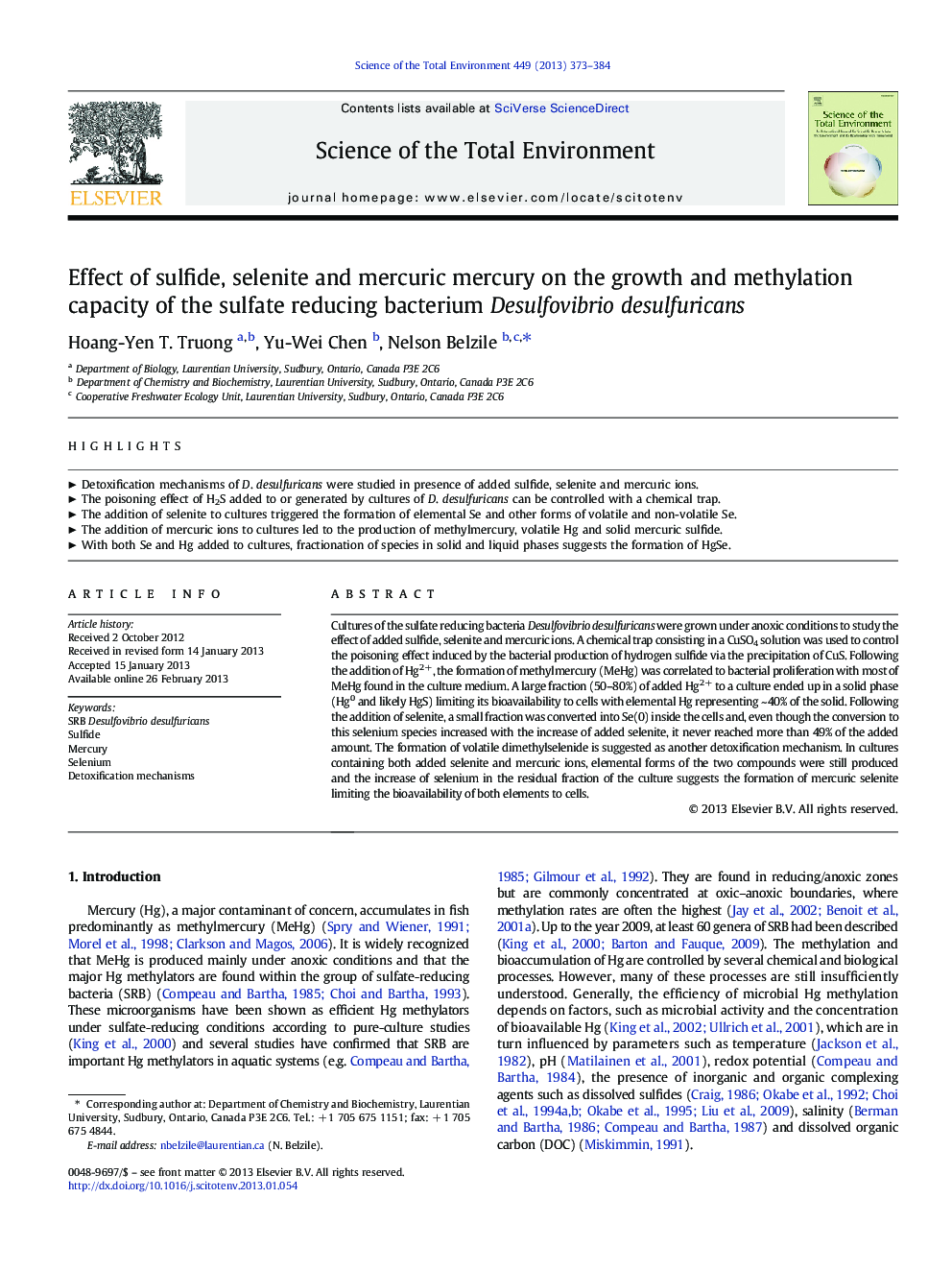| کد مقاله | کد نشریه | سال انتشار | مقاله انگلیسی | نسخه تمام متن |
|---|---|---|---|---|
| 4428877 | 1619805 | 2013 | 12 صفحه PDF | دانلود رایگان |

Cultures of the sulfate reducing bacteria Desulfovibrio desulfuricans were grown under anoxic conditions to study the effect of added sulfide, selenite and mercuric ions. A chemical trap consisting in a CuSO4 solution was used to control the poisoning effect induced by the bacterial production of hydrogen sulfide via the precipitation of CuS. Following the addition of Hg2 +, the formation of methylmercury (MeHg) was correlated to bacterial proliferation with most of MeHg found in the culture medium. A large fraction (50–80%) of added Hg2 + to a culture ended up in a solid phase (Hg0 and likely HgS) limiting its bioavailability to cells with elemental Hg representing ~ 40% of the solid. Following the addition of selenite, a small fraction was converted into Se(0) inside the cells and, even though the conversion to this selenium species increased with the increase of added selenite, it never reached more than 49% of the added amount. The formation of volatile dimethylselenide is suggested as another detoxification mechanism. In cultures containing both added selenite and mercuric ions, elemental forms of the two compounds were still produced and the increase of selenium in the residual fraction of the culture suggests the formation of mercuric selenite limiting the bioavailability of both elements to cells.
► Detoxification mechanisms of D. desulfuricans were studied in presence of added sulfide, selenite and mercuric ions.
► The poisoning effect of H2S added to or generated by cultures of D. desulfuricans can be controlled with a chemical trap.
► The addition of selenite to cultures triggered the formation of elemental Se and other forms of volatile and non-volatile Se.
► The addition of mercuric ions to cultures led to the production of methylmercury, volatile Hg and solid mercuric sulfide.
► With both Se and Hg added to cultures, fractionation of species in solid and liquid phases suggests the formation of HgSe.
Journal: Science of The Total Environment - Volume 449, 1 April 2013, Pages 373–384